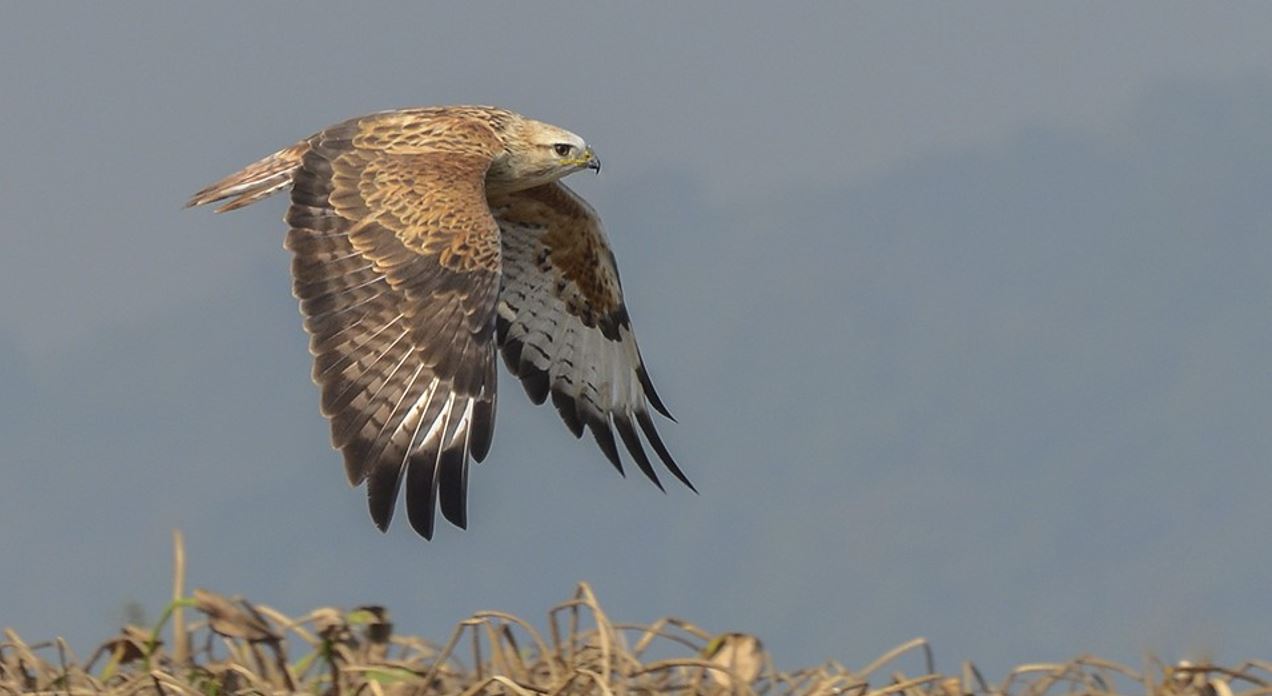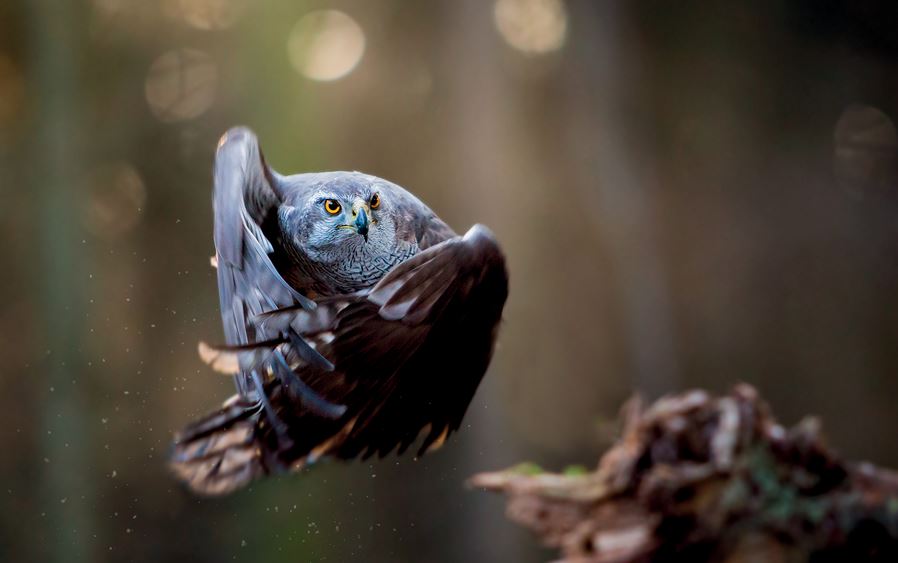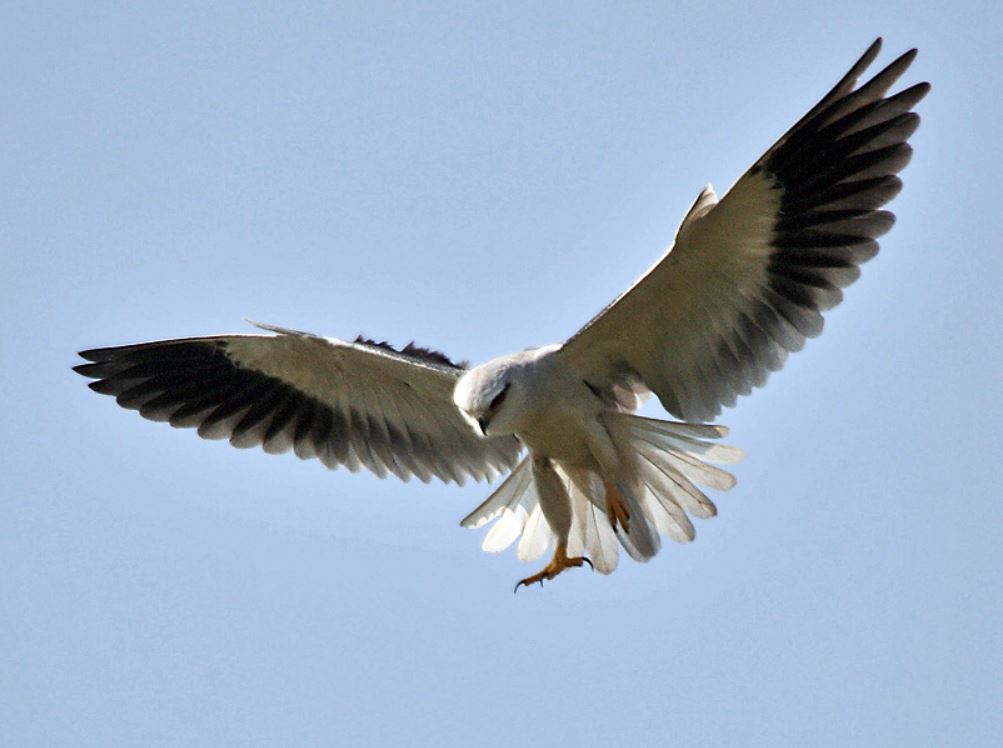The hawk family (Accipitridae) includes most diurnal birds of prey. In addition to the large eagles and vultures which are covered in another article, this group also includes hawks, buzzards, harriers, and goshawks. They are all raptors – birds of prey.
It is not possible to precisely identify the Hebrew term nez with any specific modern species, but it certainly refers to one of its representatives or to a closely related member of the falcon family (Falconidae). The following verse alludes to its migratory behavior: “Does the hawk take flight by your wisdom and spread its wings toward the south?” (Job 39:26).
Today, there are hardly any breeding birds in Israel that migrate south to overwinter. However, some migrants do pass through. Most birds possess the ability to migrate, though migratory behavior constantly adapts to climatic conditions. No book in the Bible mentions snow and ice more frequently than Job. This could suggest that the situation described reflects the climate of the Middle East during the Ice Age. Under those conditions, many birds that today are resident may have migrated to warmer winter quarters back then. Present-day “resident birds” that remain in the same territory year-round might have been medium-distance migrants during Job’s time, wintering in Central Africa.

It is astonishing how migratory birds follow a route as juveniles that they’ve never flown before, leading them to a completely unknown land. The verse quoted earlier (Job 39:26) echoes an unspoken question: “Do you trust Me to lead you to a good destination, even if My path is unfamiliar and strange to you?” Similarly, Abraham left his homeland, trusting entirely in God’s guidance: “Why did he set out without knowing where he was going? Because of his faith.” (Heb 11:8). God, the great navigator who guides birds to their destination, is even more committed to leading humanity to His good goal.
Another translation highlights its flying skill: “Are you the insightful teacher who taught the hawk how to fly?” (Job 39:26). This may refer to the peregrine falcon (Falco peregrinus), which performs breathtaking high-speed dives as part of its courtship display. When the acrobatics stir the female’s interest, she joins him mid-air, following closely. They appear to race each other, sometimes even touching chests or beaks during their synchronized flight. Together with the swift, the peregrine falcon is the fastest animal on Earth. However, it can only reach these speeds with a complete set of feathers. During molting, it seems frustrated by its inability to fly at full potential. Trained hunting falcons have been observed showing irritation and stubbornness during molt – hence the German idiom “sich mausig machen” (to act cocky or cheeky).

Some Bible translations interpret nez as the northern goshawk (Accipiter gentilis), which is also a plausible identification. Although it doesn’t reach the falcon’s extreme speeds, it is a true master of flight – the most agile raptor of all – capable of catching its prey mid-air even in dense forests. Today, it is only a rare winter visitor in Israel.

Three other Hebrew terms also likely refer to birds of prey from the hawk or falcon families: da‘a (Lev 11:14) and ra‘a (Deut 14:13) each appear only once in dietary laws, and in the same place – suggesting that ra‘a may be a scribal error. In that same verse, the dajja (Egyptian vulture) is also missing. A scribe without ornithological knowledge could easily confuse such similar-sounding names. Note also the resemblance of the Hebrew letters. The Septuagint offers no help; both verses translate them as gypa, an ambiguous term likely pointing to a type of vulture. Another similar name is aja (Lev 11:14; Deut 14:13; Job 28:7), also used six times as a personal name – a Horite, son of Zibeon (Gen 36:24; 1Chr 1:40), and the father of Rizpah (2Sam 3:7; 21:8,10-11). With no further context, translators can only make plausible suggestions for a raptor species.

The common kestrel (Falco tinnunculus), smaller and more modest than the peregrine, the black kite (Milvus migrans), marsh harrier (Circus aeruginosus), black-winged kite (Elanus caeruleus), and long-legged buzzard (Buteo rufinus) all still occur year-round in Israel and are plausible candidates. The saker falcon (Falco cherrug), merlin (Falco columbarius), Eurasian sparrowhawk (Accipiter nisus), and common buzzard (Buteo buteo), however, are only winter visitors. Less commonly seen are honey buzzards (Pernis apivorus), pallid harriers (Circus macrourus), lesser kestrels (Falco naumanni), red-footed falcons (Falco vespertinus), hobbies (Falco subbuteo), Eleonora’s falcons (Falco eleonorae), lanner falcons (Falco biarmicus), and sooty falcons (Falco concolor). They are all representative candidates. A more far-fetched suggestion is the identification of the red kite (Milvus milvus), known as the Gabelweihe in some German translations (Lu, HfA), which typically does not inhabit Israel or the Middle East.

Birds of prey perceive the world with greater spatial, temporal, and spectral resolution than humans. In particular, they can see ultraviolet (UV) light. Experiments have shown that the kestrel (Falco tinnunculus) can detect the paths, feeding sites, and burrow entrances of mice by spotting their UV-fluorescent urine traces. The kestrel picks a vantage point and “hovers” in place until its prey appears. The poor field mouse, caught moments later, never knows how it was discovered. It might not even have been her fault… Her neighbor, the vole, seems to know that the falcon sees urine – it urinates in front of competitors’ hiding spots, effectively betraying them. The origin of this “malicious” behavior remains a mystery.

Sources:
Alerstam, T: Radar observations of the stoop of the Peregrine Falcon Falco peregrinus and the Goshawk Accipiter gentilis. IBIS International Journal of Avian Science 1987; 129:267-273
Ponitz, B; Schmitz, A; Fischer, D: Diving-Flight Aerodynamics of a Peregrine Falcon (Falco peregrinus). PLoS ONE 2014; e86506; doi: 10.1371/journal.pone.0086506
Tucker, VA: Gliding Flight: Speed and Acceleration of ideal Falcons during Diving and Pull out. Journal of Experimental Biology 1998; 201:403-414
Viitala, J; Korpimäki, E; Palokangas P: Attraction of kestrels to vole scent marks visible in ultraviolet light. Nature 1995; 373:425-427; doi: 10.1038/373425a0
www.birdsinslowmotion.com (Zeitlupenaufnahmen des Habichtflugs)
Image Credits:
Wikipedia: Long-legged buzzard / Pallav Pranjal // Peregrine falcon in a dive / Peregrine Falcon (5696218357).jpg / Tony Hisgett // Common kestrel in hovering flight / Common-Kestrel-5.jpg / Andreas Trepte // Black kite / Thomas Kraft // Black-winged kite / J. M. Garg
other licences: Goshawk title image / shutterstock_1893402910.jpg / Wang LiQiang // Goshawk maneuvering through the forest / shutterstock_561579130.jpg / Vladimir Hodac

